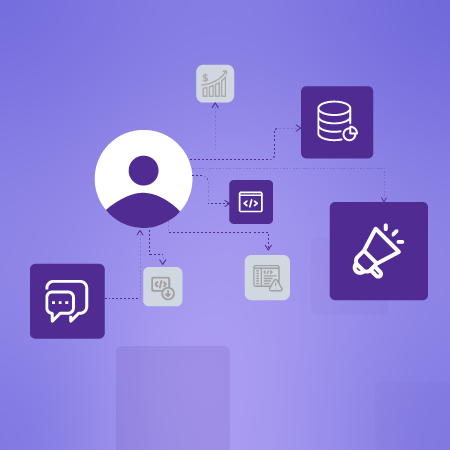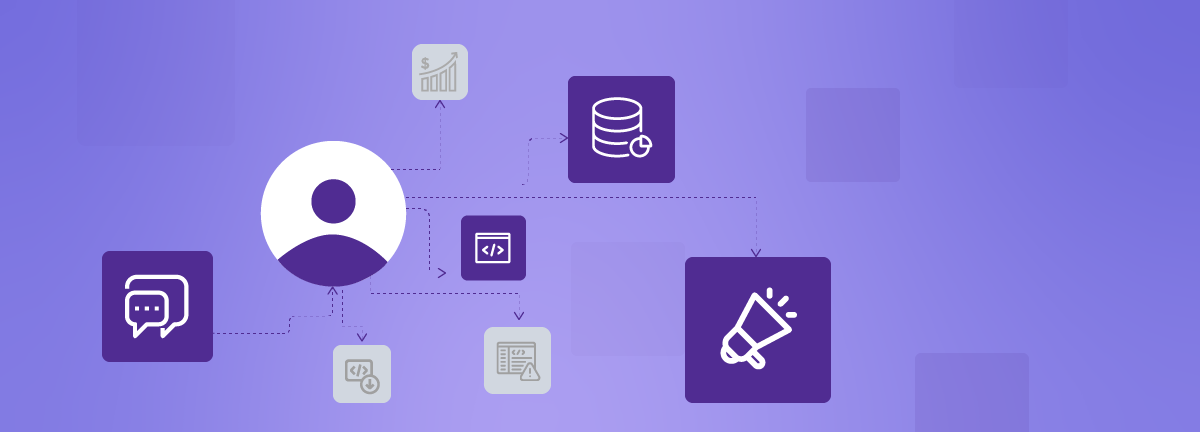
LATAM: Why Low Code development is ideal for the IT sector
June 4, 2025LATAM: Smart Automation with Low Code and AI

Considering the Latin American business landscape, intelligent automation powered by Low Code and AI is essential for accelerating the development of business applications. This powerful combination allows organizations in the region to streamline processes, optimize resources, and boost application development at unprecedented speed. Let’s explore how this combination is redefining everyday work!

To begin with: What is automation?
Automation is the process of enabling systems to perform tasks or processes with minimal or no human intervention. This ranges from executing repetitive tasks in software and applications to defining complex workflows using Low Code tools.
The goal of automation is to eliminate manual work, reduce errors, increase speed, and free up human time for higher-value tasks.
Traditionally, automation required writing extensive lines of code, making it complex, costly, and accessible only to IT specialists.
Benefits of Combining Low Code and AI
|
✨ Efficiency
Automates more processes in less time with greater accuracy.
|
|
💰 Cost Reduction
Decreases reliance on manual tasks and reduces operational costs.
|
|
⚡ Agility
Quickly responds to changing business needs.
|
|
📊 Smart Decisions
Data helps drive informed and proactive decision-making.
|
|
💡 Innovation
Focus your team on strategy, not repetitive tasks.
|
|
💖 User Experience
Faster, personalized processes improve satisfaction.
|
|
🌐 Technological Democratization
Enables more people in the organization to build solutions.
|
Why is automating with Low Code and AI better?
The combination of Low Code and AI makes automation more accessible:
Speed and Agility (Low Code)
Allows visual construction of workflows and automated applications with less code, significantly accelerating development and deployment. Changes and adaptations are much faster.
Intelligence and Adaptability (AI)
AI gives automation the ability to "think" and "learn." It can analyze large volumes of data, make complex decisions, recognize patterns, interact conversationally, and adapt to new situations—elevating automation from simple repetition to intelligent execution.
Inclusion and Collaboration
Democratizes automation. Not just developers, but business experts can actively participate in creating automated solutions, fostering unprecedented collaboration between IT and other departments.
How does it work?
The automation process using Low Code and AI typically follows these steps:
- Process Identification: An existing business process (e.g., invoice approval, customer service, employee onboarding) is analyzed and mapped to identify repetitive tasks or routine decisions that can be automated.
- Visual Design (Low Code): Using a Low Code platform, prebuilt components are dragged and dropped to model the process workflow. This includes defining steps, conditions, integrations with other systems, and decision points.
Forrester
- Integration of Intelligence (AI)
- Natural Language Processing (NLP)
To understand text or voice. - Computer Vision
To analyze images or videos. - Machine Learning
To predict outcomes, classify data, or make pattern-based decisions. - Robotic Process Automation (RPA)
To interact with legacy systems or applications that don’t have an API.
- Natural Language Processing (NLP)
- Deployment and Monitoring: The automated application or workflow is launched. The Low Code platform simplifies deployment, and monitoring mechanisms are set up to ensure proper performance and functionality.
- Continuous Optimization: Thanks to the data collected and the AI’s learning capabilities, processes can be continuously optimized to improve efficiency and accuracy.
What Can Be Automated with Low Code and AI?
The list is almost endless, covering virtually any repetitive and/or data-intensive task or process:
- Financial Operations: Expense approvals, bank reconciliation, invoice processing, fraud detection.
- Human Resources: Employee onboarding, leave management, payroll processing, answers to frequently asked employee questions.
- Customer Service: Smart chatbots, support ticket routing, complaint handling, offer personalization.
- Sales and Marketing: Lead scoring, campaign personalization, lead tracking, sentiment analysis on social media.
- Logistics and Supply Chain: Inventory management, route optimization, shipment tracking, demand forecasting.
- IT Operations: Ticket management, system monitoring, automated software testing, incident response.
Examples of Automation with AI
Smart Support Chatbots:
A customer asks a complex question on a website. An AI-powered chatbot with NLP understands it, searches the knowledge base, and provides an accurate response. If it can’t solve the issue, it escalates the case to the appropriate human agent, pre-filling all relevant information.
According to Gartner, the implementation of chatbots helped several companies reduce the number of inquiries through other channels by 70%.
Automated Document Processing:
A company receives thousands of invoices in different formats. AI, using Computer Vision (OCR) and NLP, automatically extracts key data (supplier, amount, date), validates it against purchase orders, and uploads it to the ERP system without manual intervention.
Financial Fraud Detection:
An AI system monitors banking transactions. If it detects anomalous patterns or suspicious behaviors (based on historical fraud data), it instantly generates an alert or blocks the transaction automatically, reducing the risk of losses.
Smart Employee Onboarding:
When someone is hired, a Low Code workflow activates the creation of their user account in systems, assigns equipment and courses. AI can personalize the learning path based on the employee’s role and answer common questions about internal policies.
Customer Sentiment Analysis:
AI automatically analyzes thousands of comments on social media, surveys, and product reviews, identifying overall sentiment (positive, negative, neutral) and trends, allowing companies to react quickly to brand perception.
The Present and Future of AI in Latin America
The present shows a growing adoption of these technologies to optimize operations and generate value. In fact, according to Grand View Research, the artificial intelligence market in Latin America is projected to reach USD $154.229.5 million by 2030, with a compound annual growth rate of 26.2% starting in 2025.
The future of AI holds increasing potential, where the full democratization of technological innovation becomes essential. Any professional with an idea will be able to build solutions without technical barriers. This convergence will boost regional competitiveness, encourage the creation of new businesses, and transform how organizations operate, laying the foundation for a more agile, efficient, and future-ready economy.

